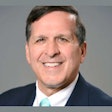
Bonuses have been around since the beginning of time. We’re always hearing about athletes who can make millions in bonuses if they hit certain milestones. This can be incredibly motivating, but will bonuses work for your practice team? After 39 years of working with thousands of practices, Levin Group has extensive data on bonus strategies and what does and does not work.
Why have bonuses at all?
 Dr. Roger P. Levin.
Dr. Roger P. Levin.
This is an excellent question. Why do you need a bonus if you are already paying someone a fair wage? There is an old and a new answer to this question.
The old answer is that people would go to work for their paycheck, generally do their best, and go home. The idea of a bonus was to create an additional incentive that had the team working harder, trying to accomplish specific goals and tasks that benefit the practice.
A bonus was thought to be typically based on money, and that was all it took to get people to try just a little bit harder. We see it in all types of athletic teams and big-money executives. If properly designed, bonuses will work just as well for dental teams as they do for executives. We all like incentives, and they usually motivate us to do a little bit more.
The new part of the answer is that people are no longer working only for money. Certainly, they need their paychecks, but as we saw with the “great resignation” of 2021 and 2022, and continuing somewhat today, people are willing to leave the workforce, change jobs, or make decisions based on wanting a better work culture and environment and not simply money.
In our research, we found that the truth was that most staff members were not changing jobs only to make a little bit more money. They were changing jobs because what they wanted from a job had significantly changed. They now wanted to work in a place that could provide a positive culture, an energized environment, a real purpose, and true camaraderie.
So, do you need to pay a bonus? No, but it can be an excellent idea, and Levin Group often encourages clients to implement bonuses into the practice for better overall practice performance. Not only will the doctor’s income be higher with the properly designed bonus, but bonuses also add to the culture and excitement if you handle them properly.
What type of bonus is best?
The answer to this question is that there is no one bonus that is best. There is no one size fits all or rule of thumb. Bonuses need to be tailored based on the desired goals. For example, in the last few years, below are some sample bonuses that we have put in place based on exactly what the practice needed at that time.
1. The production bonus. We love the production bonus because when production rises, so does profit and income, and everyone benefits. This is a bonus based on two-month performance cycles compared to the average two months of the previous year unless the practice has seasonal fluctuation. As a quick detail, we typically recommend that 22% of the production over a certain gross amount be allocated to be paid evenly to the team and prorated for part-time staff members. We now have more part-time staff members now than ever before.
2. The case acceptance bonus. This bonus is based on the number of cases accepted over a specific dollar amount. It encourages growth in the number and size of cases and creates a continuous growth trajectory, which is a key factor in overall practice performance. If the number and size of cases are growing in a practice, you can be certain that the practice is on the right track -- especially when you consider that case acceptance is directly proportional to production.
3. The new patient bonus. This bonus can be offered either to only the front desk group or the entire team. It is often better to offer this bonus to everyone, as the team is the main driver of internal new patient referrals for the practice. Once again, when referrals go up, then production, profit, and income typically go up. However, if you do not have an internal marketing strategic plan, then this bonus may be a waste of time. In essence, you’re saying to the team that you will give them a bonus based on new patients but not provide them with strategies to accomplish this goal. Levin Group is a major advocate of having an internal marketing program for new patients.
4. The no-show bonus. Unfortunately, many practices have a high number of no-shows. No-shows lead to unfilled chair time, and, in a challenging economy, no-shows typically rise. It is possible that practices could lose $3 to $6 million of revenue over 36 years simply from no-shows and unfilled chair time per doctor. If a practice has a no-show rate higher than 2%, then a bonus of this nature may be effective. This bonus can be offered to the entire team or strictly to the scheduling coordinators at the front desk. Additional training may be necessary to help the team achieve the goal and receive the bonus.
5. The longevity bonus. As the “great resignation” began in 2021, it became necessary to identify innovative and creative strategies to keep the team in place. In Levin Group’s 30-year ongoing study of the top 10% of producing practices, we found 17 principles that these practices typically have in common. An important one is higher staff longevity. These practices know that it is always easier and more productive to retain the current team than it is to attempt to spend time recruiting and hiring only to end up with new people joining the practice who lack the necessary background, experience, or knowledge. Of course, hiring is necessary; however, it takes time and effort, and it saps energy, so it should be done minimally. Longevity bonuses can be paid at three, five, 10, 15, and 20 years, with the bonus escalating for each additional period. Even though the bonus can be sizable over time, it costs far less than it does to recruit, hire, train, and onboard new people.
6. Other bonuses. There are other bonuses, and these rewards are selected based on the needs of each practice. We have seen bonuses for arriving on time, reducing overhead costs, organizing the practice, providing excellent customer service, and getting good patient reviews. Bonuses of this nature are simple, easy for the team to understand, and fun to receive if the goal is achieved.
Why do bonuses fail?
The main reason bonuses fail is due to poor design and/or not understanding the driving factors or motivations of the team. One example of a bonus that fails almost regularly is the annual bonus.
Sometimes practices treat the team members as if they were executives in Fortune 500 companies. There are many executives that have low base salaries, and the bigger part of their compensation comes in the form of a bonus at the end of the year based on performance.
Executives understand this type of bonus. But it is not natural to dental team members who never spent years climbing a corporate ladder and are accustomed to year-end bonuses.
For a dental team member, setting up a bonus that is earned 12 months later is equal to not having a bonus at all. Team members forget about it, it is too far away, and it does not create the motivation or incentive that is desired. We have heard about team members who received annual bonuses at the end of the year but then asked what the bonus was for. Clearly, this is an unnecessary bonus and merely adds to overhead.
Bonuses also fail if they are poorly designed. We see many bonuses that are created based on almost unachievable goals. Once in a while, there is an extremely self-motivated team that will go for a stretch goal bonus, but most of the time, this is not the case. It is in everyone’s best interest, including doctors, for the bonus level to be reached. Remember, if the team gets a bonus, the doctor should see significantly increased income.
Summary
Bonuses work, and they work very well. However, they must be properly designed, achievable, and based on the current needs of the practice. If you don’t have specific needs, we recommend using the production bonus described under No. 1 above. This is one of our favorites and works extremely well. Keep in mind that the team might need additional support, education, or training to make the changes and achieve the bonus.
Dr. Roger P. Levin is CEO of Levin Group, a leading practice management and marketing consulting firm. To contact him or to join the 40,000 dental professionals who receive his Practice Production Tip of the Day, visit LevinGroup.com or email [email protected].
The comments and observations expressed herein do not necessarily reflect the opinions of DrBicuspid.com, nor should they be construed as an endorsement or admonishment of any particular idea, vendor, or organization.



















